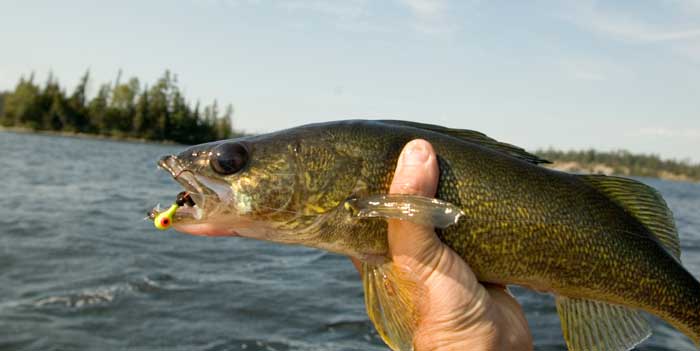
Wag Your Tail For More Walleye, Bass and Trout
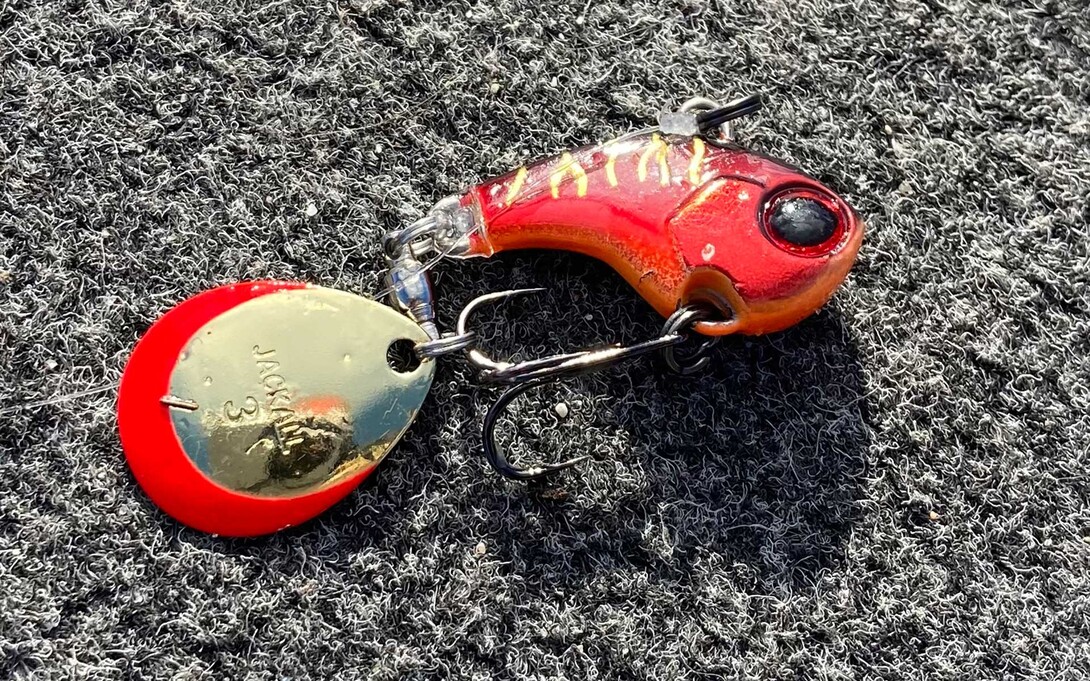
I really enjoy sharing the boat with friends, and not only for the camaraderie. It is always an opportunity to learn new tactics, tricks, and techniques. Last week, for example, Wally Robins and Craig Lister, from the Ottawa area came up to fish with me in Sunset Country, for some late-season walleye and smallmouth bass. And halfway through the first day, Craig had me straining my neck.
“What the heck are you throwing?” I asked him after he flipped a gorgeous 24-inch walleye into the Kingfisher.



“It is a tail spinner called the Deracoup,” he replied while unhooking the flopping fish. “And it’s worked everywhere I’ve fished across Ontario.
As a matter of fact, Craig said he first got onto the technique in early June when he was fishing for lake trout outside Ottawa. His initial thought was that he could nab suspended fish by vertically hanging the 1-ounce model over the side of the boat. “I figured the best way to start was to hover stroll it,” he explained. “My buddy was running the electric trolling motor up front, doing his thing with a tube jig and swimbait, while I stayed on the back deck keeping my lure as vertical as possible. I could feel the blade thumping even when I had my bait down 70 feet over 120 feet of water. And it didn’t take long before I felt the first laker hit. Over the next couple of hours, I boated five husky trout to everyone my buddy caught.”

Impressed by the lake trout action, Lister was super excited to try the tail spinner for the bass and walleye that it was intended to catch. And it all came together when he spent another day with a friend in southeastern Ontario.
“I only brought along four spinning rods and very little tackle,” he told me, while he unhooked a splendid Lake of the Woods smallmouth. “We were fishing the main basin, hitting underwater point extensions that lead out to deeper water. The lake had a flat sand bottom, unlike most Shield-type waters. Anyway, we caught several smallmouth in the morning using Ned rigs and tube jigs. But then the bite slowed down and I decided to try the 1/2-ounce Deracoup in the Red Tiger colour.
“I immediately connected with a solid smallmouth working the tail-spinner in a slow lift and drop cadence. It was all about making a long cast, letting the lure settle to the bottom, and then lifting it up slowly by sweeping my rod from the two o’clock to the twelve o’clock position. The whole time I was feeling the Colorado blade thumping, and then I’d let it settle back to the bottom on a semi-slack line.”
“Most of the smallies hit when I lifted up the lure and felt the blade thump. I boated so many bass that my buddy asked me what I was using. I gave him one of the tail spinners and pretty soon he was matching me fish for fish. I am not exactly sure of the number of bass we caught that day, but it was easily 40 plus, and several were four- to five-pound trophies.”


Watching my friend put on a walleye and bass fishing clinic with the tiny tail spinner — on my home waters, no less — I asked Lister to detail the tackle he uses so that other anglers can get in on the action.
“My set-up is using a 7-foot 6-inch light action, extra fast, GLoomis GLX walleye rod. I pair it with a Shimano Sustain C3000HG spinning reel spooled with 10-pound test Power Pro braid and finish it off with a two-foot leader comprised of 15-pound test fluorocarbon. I like using the slightly heavier leader to prevent accidental breaks off when I am casting the compact tail spinner. Plus, it is more abrasion-resistant when I am pounding it through rock-infested bottoms. The stiffer leader also stops your braided line from tangling with the lure and if you do get snagged, you can put more pressure on it to straighten out the hook and pull it free.”
As I said, the camaraderie is always fun, but the fishing lessons are priceless.
Recommended Articles

10 Facts About Lake of the Woods

Eating Northern Pike

Crawford’s Diamond in the Rough

Predicting Lake Thickness

Lakers of Lower Manitou: Fishing Just North of the U.S. Border
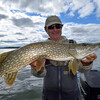
Don't Forget The Umbrella

Top 5 Baits for Smallmouth and Largemouth Bass

Learn to Be Slow in a Hurry
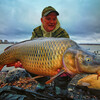
World Class Carp
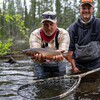
In Search of Brookies

Beaded Lures

Drive-to Ontario Lodges

The Tigers of Sunset Country
Indian Lake Lodge
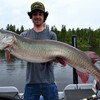
Piecing Together the Muskie Puzzle
Troutfly Lake Outpost
Top 5 Musky Destinations in Ontario
Ontario Brook Trout

HIdden Bay Lodge



